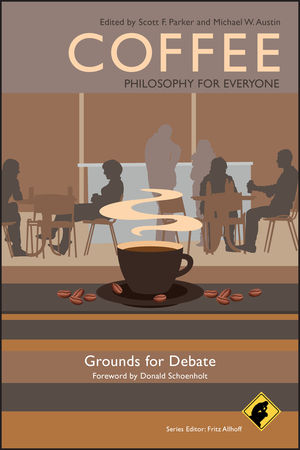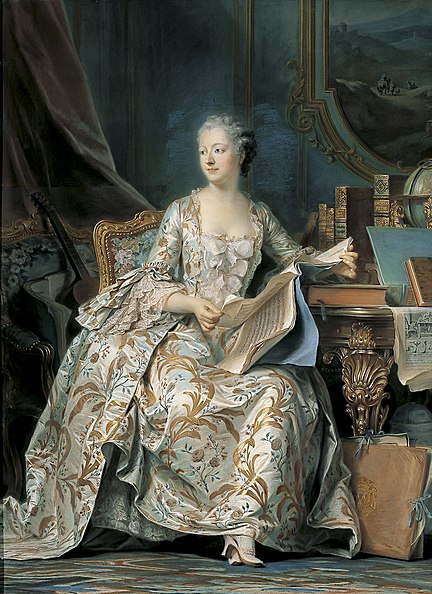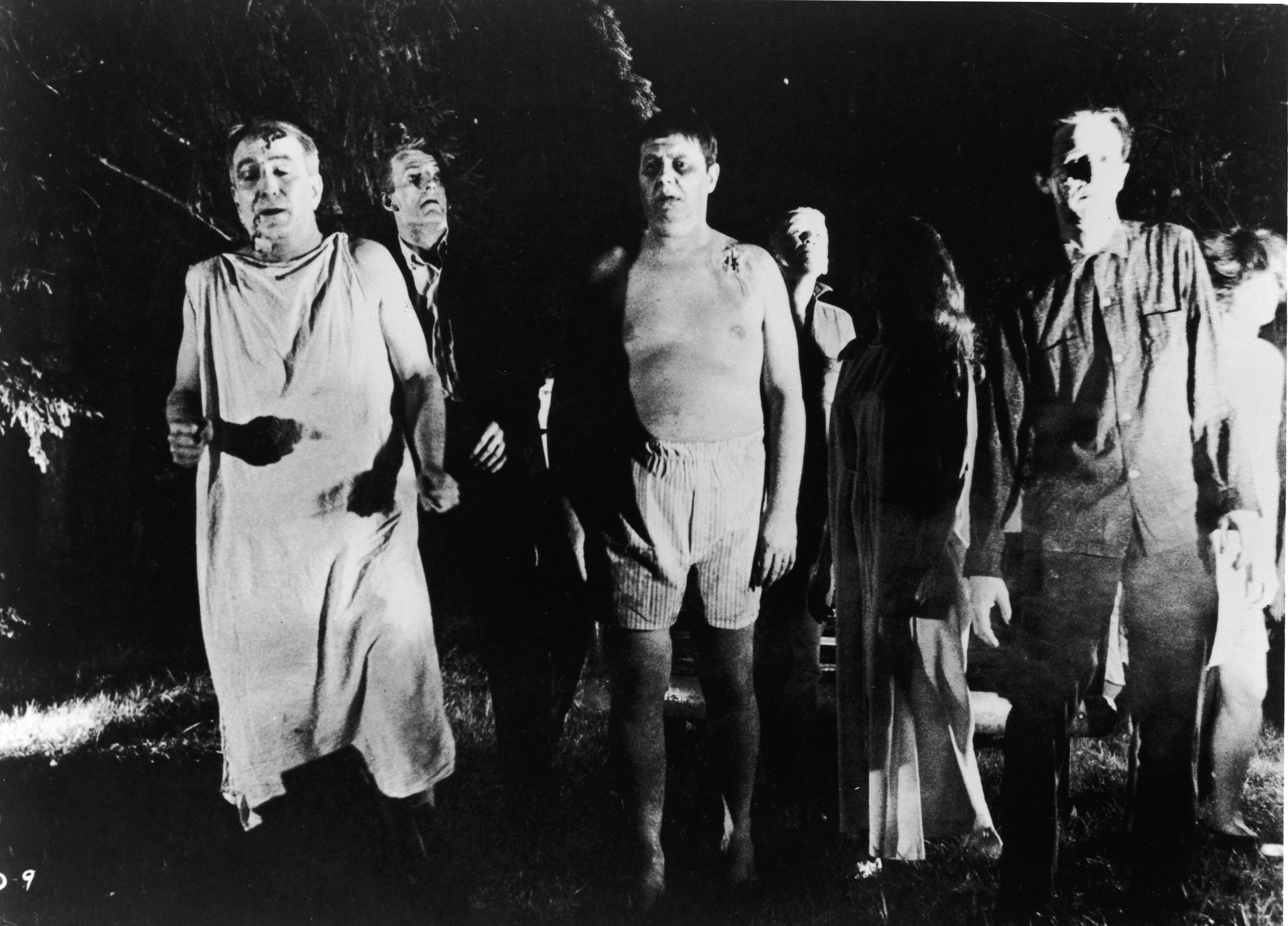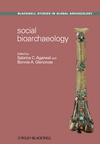Monday, July 18, 2011
Thursday, June 30, 2011
Wednesday, June 29, 2011
Wednesday, June 22, 2011
Wednesday, June 15, 2011
To Be or Not to Be Monogamous?
What does it mean to be monogamous? Is it:
- Sexual exclusivity between two partners?
- A two-party partnership, characterized by cooperation where resources are shared and children are produced?
- A genetic commitment to producing offspring with a single partner?
- A social system in which only two people at a time are contracted by marriage ?
Or is it perhaps some combination of these four?
Monday, June 13, 2011
Weinergate: Private Records in a Public Age
You can find me over at the Scientific American guest blog today, where I tackle the moral outrage over Weinergate, and the role technology plays in judging these offenses. Here's an excerpt:
History is littered with private indiscretions made public—some have just been more public than others:
- It is believed the Leonardo da Vinci was a passionate instructor to his students; one in particular remained in da Vinci’s favor for 26 years.
Read the rest here.
- Cleopatra made no secret of the nature of her political alliances, which included a close friendship with the notable Marc Antony.
- Alexander the Great’s conquests included two wives, a mistress, and possibly his life-long friend Hephaestion.
- Catherine the Great masterfully orchestrated a series of lovers, one of whom may have had a hand in the death of her ill-fated husband, Peter.
Rep. Anthony Weiner (D) of New York, who tweeted and emailed photos of himself in various states of undress and arousal to several women, joins the ever-growing ranks of political figures whose extramarital pursuits have been made available for public scrutiny. However, unlike George Washington (a purported womanizer), Thomas Jefferson (who fathered several children by Sally Hemings), Warren Harding (had trysts in a White House closet), or even John F. Kennedy ("Happy Birthday, Mr. President"—though his relationship to Marilyn Monroe has never been confirmed), Weiner’s indiscretions will not be whispered about. Rather, he must contend with life lived in the age of media—where so many details of our lives, already public, can be collected and shared at the push of a button not just by newspersons but by regular folk too.
- Letters revealed that Franklin Delano Roosevelt got quite friendly with his wife’s social secretary Lucy Mercer.
It is unlike anything anyone in his position has experienced before. The scandal that surrounded Bill Clinton doesn’t even come close, although the American public sat rapt as he proclaimed "I did not have sexual relations with that woman," and waited expectantly for the admission otherwise to come.
As an audience we’ve been here before. And yet, each time it happens, it seems to come as a surprise. We are at once irate and nonplussed. "How dare a person in power betray our trust?" we ask even as we turn a blind eye at the fissures in our own social circles. What’s the real reason behind our moral outrage? And what role does technology play in it?
Tuesday, June 7, 2011
Thursday, June 2, 2011
Wednesday, June 1, 2011
Wednesday, May 18, 2011
Tuesday, May 17, 2011
Tuesday, May 10, 2011
Unraveling The Fear o' the Jolly Roger
The NYTimes recently explored the "pirate brand" by tracing the emergence of the skull and crossbones—the Jolly Roger—as a symbol of terror on the high seas. The Times hails the ominous design as a magnificent exercise in collective hybrid branding, noting that economics drove pirates to adopt a version of this particular symbol to facilitate their intent to plunder. It's a fascinating discussion on the efficiency and power that good branding can deliver, but it overlooks the ways in which the power of the symbol as we recognize it draws in part in the acceptance and manipulation of the image by others.
Friday, May 6, 2011
As Above So Below—Investigating "Life Underground"
New York City has a reputation for being a dangerous place. You never know what may lurk beneath the streets—alligators, giant rats, even turtles and fish. The 14th Street and 8th Avenue subway station is home to one of my favorite public art installations: Tom Otterness' Life Underground at 14th Street and 8th Avenue places miniature characters in precarious situations—such as being eaten by an alligator.
Wednesday, May 4, 2011
Monday, May 2, 2011
Wednesday, April 27, 2011
The Rise of the Hydra? Couple Profiles on Facebook
In Greek mythology, the Hydra was a dangerous water serpent with many heads. Its breath was allegedly poisonous, and for every head you cut off two more would grow in its place. In the last two weeks, three separate couples on Facebook in my network, who don't know each other, have merged their profiles—they've become Hydras in their own way: a single entity, posting under a hybrid name, generating all sorts of confusion as to who is really behind the content (though language is sometimes a giveaway). Networks emphasize the individual's connection to the collective. What are the implications of these dual identity profiles to the larger social group?
Monday, April 25, 2011
Friday, April 22, 2011
Selling the Illusion of Wealth
To round out AiP's discussion on our relationship with fashion, today we're looking at the counterfeit industry. On Monday, we probed the appeal of high-heels. And on Wednesday, we discussed a particular color trend in New York City.
Wednesday, April 20, 2011
Reflections of Gotham: Why Do New Yorkers Wear So Much Black?
This week AiP investigates our relationship with fashion. On Monday, we probed the appeal of high-heels. Today, we’ll discuss a particular color trend in New York City. And on Friday, we’ll explore the psychology behind brands.
Monday, April 18, 2011
Power, Confidence, and High-Heels
This week AiP investigates our relationship with fashion. Today, we’ll delve into the appeal of high-heels. On Wednesday, we’ll discuss a particular color trend in New York City. And on Friday, we’ll explore the psychology behind brands.
Monday, April 11, 2011
On My Shelf: Social Bioarchaeology
At a moment when tensions within anthropology are still simmering close to the surface, Sabrina Agarwal's and Bonnie Glencross' edited collection of social bioarchaeological essays highlight the importance of collaborative efforts within the discipline. The volume is definitely not light reading, however, it represents a carefully curated exhibit on the development of biological archaeology and traces its relevance to current research.
Wednesday, March 30, 2011
Why Do We Hurry to Wait?
While traveling a few weeks ago, I had ample opportunity to observe the art of waiting. Or rather, the art of not waiting. New Yorkers aren’t known for their patience—something that became painfully obvious when I got frustrated with the service S and I received at a south Florida restaurant. (If it takes more than 10 minutes for a server to come by and get drink orders after the customer has been seated, there is something wrong. We left, by the way, as even the normally unflappable S was perturbed, and were seated and served almost immediately—at the establishment just next door. (1)) While it may be that New Yorkers generally have little tolerance at being made to wait—and really, when you live in a culture of 24/7, the expectations are rather high—perhaps there are certain situations in which we’re all a bit impatient.
Monday, March 28, 2011
Does Cooperation Really Make It Happen?
What didn’t Sesame Street teach us? Working together (sometimes) makes things go easier—whether you're a part of a group of Muppets who want a community garden, or perhaps hunter-gatherers managing your existence. Humans are the only species to cooperate to the degree that we do, and this cooperation may have allowed for many other derived social traits related to group living to emerge, including generosity, sharing, teaching and learning, and shared intentionality. But how and why did cooperation emerge in the first place? A recent paper in Science by Hill, Walker, and colleagues investigates cooperation in the course of human social and cultural evolution by looking to contemporary hunter-gatherer groups for some of the answers.
Monday, March 21, 2011
Thursday, March 17, 2011
Wednesday, March 16, 2011
From the Archives: The Unglamorous Life of a Pay Phone
These days it seems that everyone has a cell phone. Most of us walk by public pay phones without a second glance in their direction. I definitely do—until Wednesday, when I stumbled upon a couple actually using a pay phone! Yes, they were likely tourists (I made that assumption based on their attire), but hey, it turns out that those ugly, dirty booths, kiosks, and stands actually do work. Well, sometimes.
Monday, March 14, 2011
From the Archives: Finding Traces of New York's Dutch Heritage
While we tend to think of the history of New York City in terms of the English settlement, the truth is the city's foundation is decidedly Dutch. I say this without any disrespect to the original inhabitants of the land that so enraptured the early Europeans, but it's true. And it is the Dutch I wish to speak of today. Believe it or not, much of the New Amsterdam colony has remained—names of places in and around the city, as well as throughout much of the New England region, remind us of our Dutch heritage: Stuyvesant, the Bouwerie, Greenwyck (Greenwich Village), Breuckelen (Brooklyn), Parelstraat (Pearl Street), Fresh Kills, Gravesende, Van Cortland, Nieuw Haarlem (Harlem), Vlissing (Flushing), Lange Eyelandt, as well as Roode Eyelandt and many more, attest to a Dutch presence in our history. And the truth is that had we solely been an English colony, the flavor of New York City would be immensely different today. While the English Puritans were establishing mono-cultures to the north in Boston and the surrounding areas and to the south in Virginia, New Amsterdam was already a bustling model of diversity. As a port settlement, its main concern was business (which remains true today), so people of many different backgrounds, religions, and races—and characters—settled here from its earliest inception.
Tuesday, March 8, 2011
This Is Your Brain on Disney
Researchers have suggested that Disney generates a successful experience because our brains are responsive and receptive to art, creativity, storytelling, humor, wit, music, fantasy, and morality, all of which may have been important to social development—and feature heavily in the "Disney experience" in a rather amplified way.
Friday, March 4, 2011
Behind-the-Scenes at the American Museum of Natural History
 |
| Reception in the Hall of Saurischian Dinosaurs at the American Museum of Natural History's Dinosaur Tweetup. |
The American Museum of Natural History (AMNH) had a hand in raising me. I literally spent summers there as a kid. The rotunda Barosaurus and I are old friends—it was under his watchful eye, after all, that I had my introduction to evolution, science, and natural history. With two working parents, the museum was the best way to spend my days and I roamed the Hall of Mammals and the fossil halls freely, soaking it all in. As I grew older, it was frequently my escape. And it still is. After a long week, or a particularly rough day, all it takes is quick run uptown on the C train to make me feel better. Leisurely afternoons in the Hall of Pacific Peoples—which often feels like another world—and the fossil halls are my favorite things. This place played a huge role in the ways I think, write, and talk about science. And last night, the AMNH Dinosaur Tweetup took me behind the scenes and showed me some of the ways the spaces I love came to be.
Thursday, March 3, 2011
Wednesday, February 23, 2011
Monday, February 14, 2011
Tuesday, February 8, 2011
The Threads of Language and Identify
I can identify a New Yorker in conversation in a heartbeat. And it's likely that the rest of the country can as well. Residents of New York City and western Long Island (or Lung Guylan as I am apt to pronounce it—a good friend of mine from the Midwest once told me that I was the only person she knew who could produce such a hard /g/ in front of an /i/) speak a distinct dialect. The elements of the dialect contained within these statements are fairly recognizable thanks to the likes of Robert De Niro and Bugs Bunny. It is often parodied and often in the vein of the extremes apparent in the examples above, even though relatively few New Yorkers have such a hard stereotypical accent. It is also interpreted as aggressive and confrontational. Still, whether these elements are subtle and make appearances in moments of passionate debate or inebriation, or so pronounced as to make the speaker almost unintelligible, the New York dialect is a readily identifiable marker.
New Yorkers aren't forced to speak the way they do. But what if they were? What if New Yorkers had to drop their /r/s so that others could recognize them? How would their relationship to language change?
Thursday, February 3, 2011
Monday, January 24, 2011
When the Lights Go Down in the City
 |
| A late summer night in Times Square (Sept. 2010). |
As the sun sinks over the Hudson River, New York City doesn’t power down. Lights flicker on and soon the famous skyline is lit in a blaze that defies the natural clock. But few stop to consider where and how that electricity comes from and what it means when it isn’t there. That is such a frightening consideration that we prefer to pretend it isn’t a possibility.
Tuesday, January 18, 2011
Do Men and Women Read Emotions Differently?
Appropriate social and emotional responses are often culturally driven, and produced to various degrees dependent on personality. Regardless of cultural association, some people, both male and female, seem more emotionally expressive and perceptive when compared to others—is there a biological explanation for this?
Possibly. But not in the way you would think.
Wednesday, January 12, 2011
The Content We'll Pay For
At a time when content providers and users are weighing the advantages and challenges of paid online subscriptions, the Pew Internet and American Life Project has released data suggesting that users are willing to pay for online services and products classified as "intangible"—such as software, articles, and music.
Monday, January 10, 2011
In Search of Penn Station
 |
| Penn Station, 1920. Credit: LOC |
Penn Station is my portal into and out of New York City. I've estimated that I spend at least 250 hours a year there. Most days, I pass through like other travelers intent on reaching a destination but it's hard for me to completely ignore the history behind the basement cavern that occupies this space. Once a beautiful Beaux-Arts building, it was torn down when Pennsylvania Railroad went bust to make room for Madison Square Garden. But traces of the old Penn Station remain—if you know where to look.
Friday, January 7, 2011
Smells From the Past: The Fulton Fish Market
Around midday, if you happen to stroll down by the South Street Seaport you can pick up on the smell of fish in the air. If you can manage to follow your nose—which really isn't all that hard to do—it will lead you right to the old site of the Fulton Fish Market. It has been closed since 2005, but if you close your eyes while you stand outside the gates of the old market building you can smell the day's catch and just hear the bustle of fishmongers at their trade.
Monday, January 3, 2011
Eating for Memory
When my parents moved to Florida five years ago, they took many of my food traditions with them. I never really learned how to make many of our cultural foods. As a teenager I suppose I had presumed they would always be close enough for me to request breakfast staples and special occasion dishes as needed or desired. Fortunately, S and I live within driving distance of a thriving West Indian community, so when I start to long for a taste of "home," I can find something close enough to the flavors from my childhood to satisfy. It's not quite the same, but it is enough.
Subscribe to:
Posts (Atom)






































